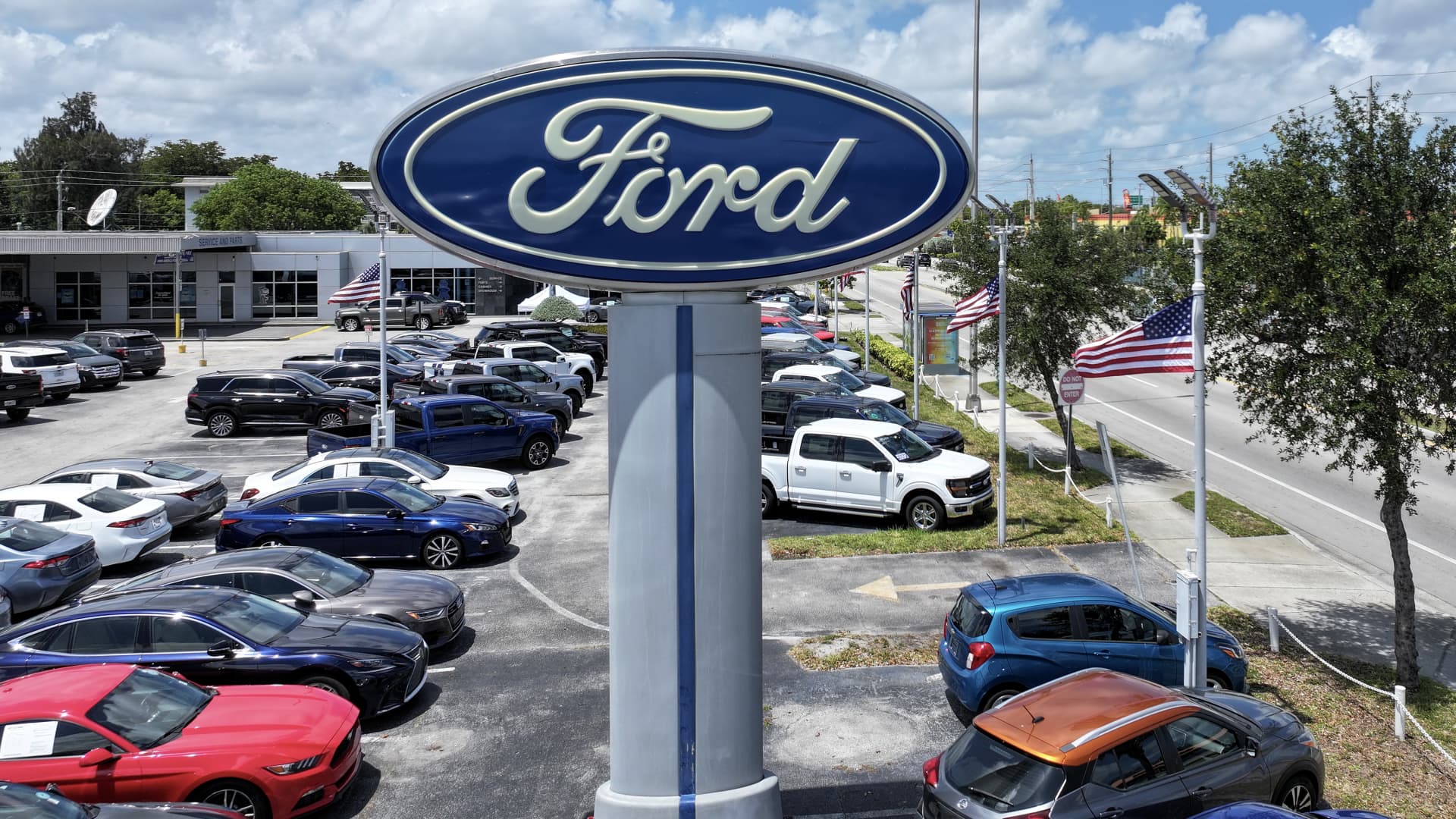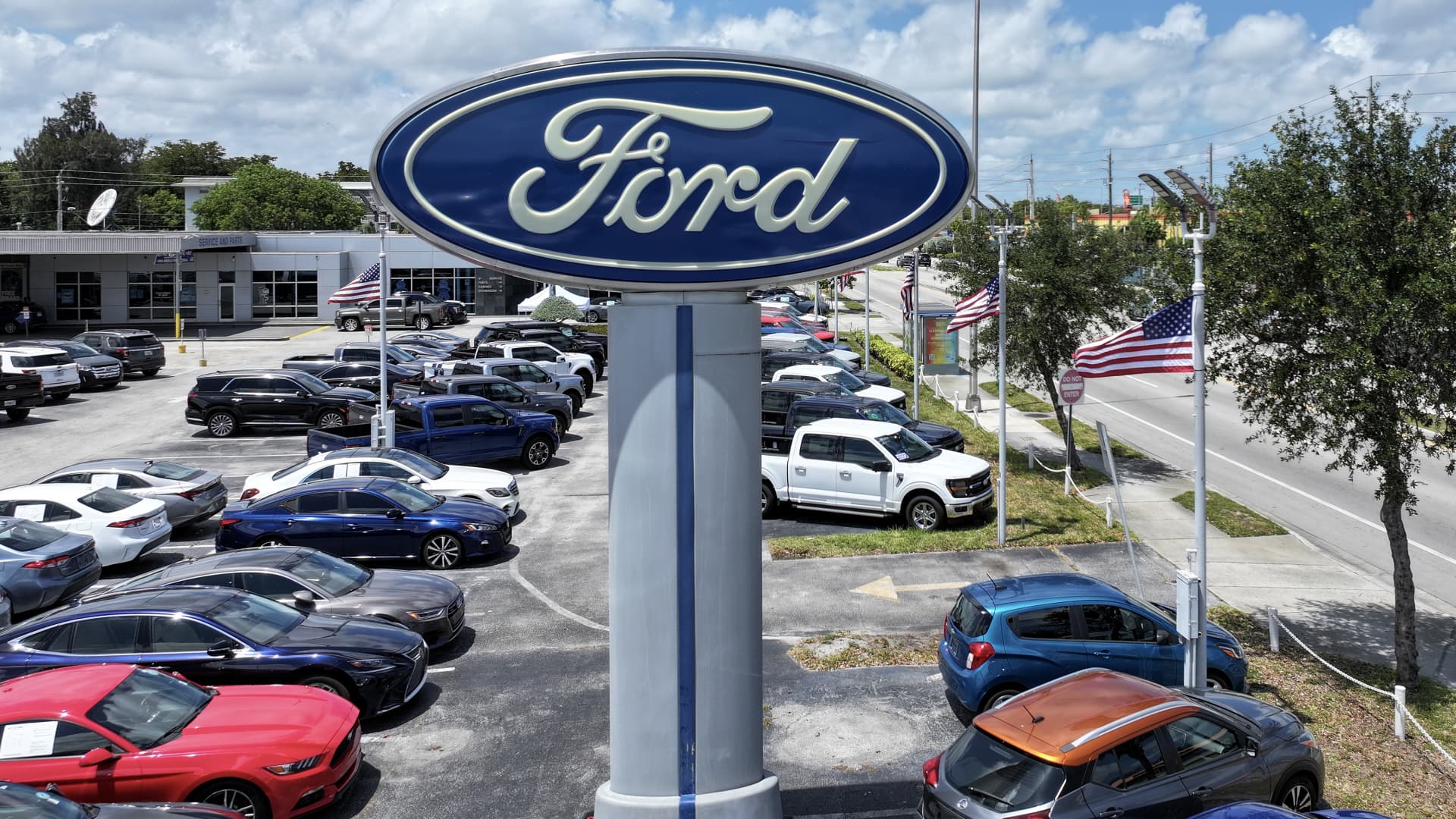Ford’s Q2 sales surge represents a significant milestone for the company, reflecting its strategic adaptability and resilience in a dynamic automotive market. The second quarter of 2023 saw Ford achieve a 14.2% increase in sales, a figure that starkly contrasts with the industry’s modest 1.4% growth. This performance underscores Ford’s ability to outpace competitors and capitalize on key market trends. The company sold 527,905 Ford and Lincoln brand vehicles, marking the highest second-quarter sales volume since 2019. While this is a positive development, it is essential to recognize that these figures still fall short of pre-pandemic highs, which exceeded 600,000 units.
The impressive sales growth can be attributed to several factors, with the strong demand for pickup trucks, particularly the F-Series, playing a pivotal role. F-Series sales climbed 11.5% to 222,459 units, representing the best second-quarter performance for this category. Trucks are a critical profit center for Ford, contributing significantly to the company’s revenue. Additionally, Ford’s diverse powertrain offerings, including gas, hybrid, electric, and diesel options, have allowed consumers to choose vehicles that align with their preferences and needs. The company’s “From America, For America” campaign has also resonated well with customers, further driving sales.
Easing supply chain constraints and pent-up demand for personal transportation have also supported Ford’s sales growth. The automotive industry has faced significant supply chain challenges, particularly a chip shortage, but as these issues have abated, manufacturers like Ford have been better positioned to meet consumer demand. This has enabled Ford to capitalize on the growing demand for vehicles, particularly in the truck segment.
A closer examination of individual segments reveals a more nuanced picture. While overall sales figures are positive, some models have underperformed. For instance, sales of the Expedition fell by 48%, and the Navigator was down 17%. This suggests that while certain models are highly successful, others may require strategic adjustments to improve their market appeal. In terms of electrified vehicles, Ford has seen mixed results. While the broader market experienced a surge in sales of battery-electric and hybrid vehicles, Ford’s EV sales slipped during the quarter. However, Ford’s second-quarter sales growth was driven entirely by hybrid vehicles, highlighting the importance of hybrid technology as a bridge to full electrification.
Ford’s strong sales performance in Q2 has had a positive impact on the company’s financial outlook. The company reported an 18% increase in profit for the second quarter, driven by strong results in North America and Asia Pacific. Looking ahead, Ford faces both opportunities and challenges. The company expects $1 billion in cost reductions this year from lower warranty expenses and production costs, with adjusted EBIT anticipated to normalize. However, Ford is also navigating a complex and evolving market landscape, including potential impacts from tariffs, fluctuations in industry sales volume, and changing consumer preferences.
Ford’s recent sales surge reflects its ability to adapt to market dynamics and capitalize on key strengths. However, several challenges loom on the horizon, demanding strategic foresight and decisive action. One of the most pressing challenges is the need to refine Ford’s electrification strategy. While the company has made strides in electrification, the mixed performance of its EV sales signals the need for a more focused approach. Ford must enhance the appeal of its electric vehicle lineup through technological innovation, improved range, and competitive pricing. The continued success of hybrid vehicles underscores the importance of this segment as a transitional technology. Ford should leverage its hybrid offerings to attract consumers who are not yet ready to fully commit to electric vehicles, thereby building a broader customer base for its future EV models.
Another critical area of focus is supply chain resilience. Although supply chain constraints have eased, the automotive industry remains vulnerable to disruptions. Ford must continue to build resilience in its supply chain by diversifying suppliers, investing in technology to improve supply chain visibility, and developing contingency plans to mitigate potential risks. This proactive approach will ensure that Ford can maintain production levels and meet customer demand even in the face of unforeseen challenges.
The competitive landscape is also evolving, with both established players and new entrants vying for market share. Ford must differentiate itself by focusing on its core strengths, such as its truck lineup and its “Built Ford Tough” brand image, while also innovating in areas like connectivity, autonomous driving, and customer experience. By staying ahead of the curve in these areas, Ford can maintain its competitive edge and attract a new generation of customers.
Cost management is another crucial aspect of Ford’s strategy. The company has announced plans to reduce costs, which is essential for improving profitability and funding future investments. However, cost-cutting measures must be carefully implemented to avoid compromising product quality or customer satisfaction. Ford should focus on streamlining its operations, reducing waste, and leveraging technology to improve efficiency. By managing costs effectively, Ford can enhance its financial performance and create a more sustainable business model.
Finally, Ford must be prepared to navigate market volatility. The automotive industry is subject to various external factors, such as economic conditions, government regulations, and consumer confidence. Ford must develop flexible strategies that can be quickly adjusted in response to changing conditions. This includes closely monitoring economic indicators, anticipating regulatory changes, and understanding evolving consumer preferences.
In conclusion, Ford’s recent sales surge is a testament to its resilience and adaptability in a rapidly changing market. The company’s success in the second quarter was driven by strong demand for its truck lineup, a broad range of powertrain options, and easing supply chain constraints. However, Ford must continue to innovate and adapt to maintain its competitive edge in the face of evolving consumer preferences, technological advancements, and market volatility. By focusing on electrification, supply chain resilience, competitive differentiation, cost management, and market volatility, Ford can position itself for long-term success and sustain its growth momentum.












